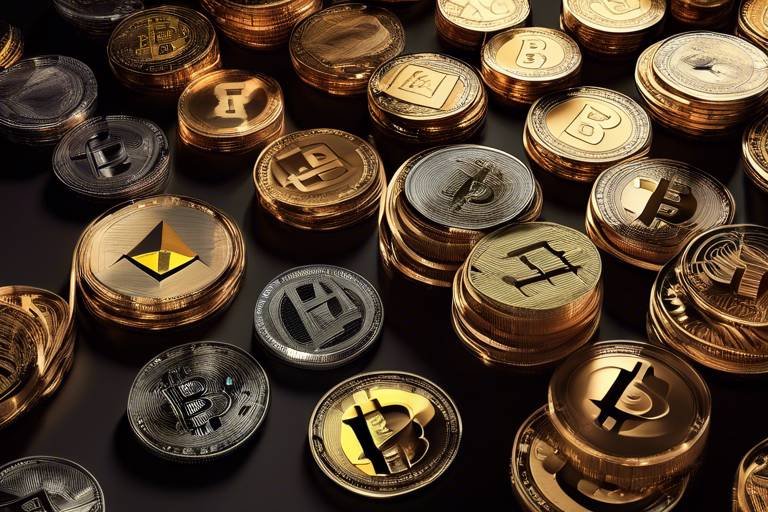Understanding Crypto Forks - Risks and Rewards
In the ever-evolving world of cryptocurrency, understanding the nuances of blockchain technology is crucial for anyone looking to navigate this complex landscape. One of the most significant concepts that every crypto enthusiast should be familiar with is the idea of crypto forks. But what exactly are they? Well, imagine you're on a road trip, and suddenly the road splits into two paths. You can either continue on the original route or take a new road that leads to a different destination. This is essentially what happens in the world of cryptocurrencies when a fork occurs. It marks a divergence in the blockchain, resulting in the creation of a new cryptocurrency and potentially altering the dynamics of the existing one.
Crypto forks can be both exciting and daunting. They can introduce innovative features and improvements to the original blockchain, but they also come with their own set of risks and uncertainties. As an investor or a user, understanding the implications of these forks is vital. Are you ready to dive deeper into the world of crypto forks and uncover the risks and rewards they bring?
A crypto fork occurs when a blockchain diverges into two separate paths, leading to the creation of a new cryptocurrency. This can happen for various reasons, such as disagreements within the community about the direction of the project, the need for upgrades, or even security concerns. Understanding this concept is essential for navigating the evolving crypto ecosystem. Forks can be thought of as a software update; sometimes, the update is smooth and beneficial, while other times, it can create complications and challenges.
When it comes to forks, there are two main types that you need to be aware of: soft forks and hard forks. Each type has distinct characteristics and implications for blockchain users and developers, influencing their decisions and strategies. Knowing the difference between these two types can help you make informed choices about your investments and participation in the crypto community.
Soft forks are essentially backward-compatible upgrades that allow nodes to recognize new blocks while still accepting older blocks. Think of it like a family reunion where some members decide to adopt a new way of doing things, but everyone else can still participate without having to change their ways entirely. This section will delve into their significance and how they impact the blockchain community.
One of the most significant advantages of soft forks is that they can enhance security and add features without forcing all users to upgrade. This means that the community can gradually adopt new changes, minimizing disruption. Some benefits of soft forks include:
- Improved security measures
- Increased functionality
- Less risk of splitting the community
These benefits make soft forks an attractive option for many blockchain projects, allowing them to innovate while maintaining user loyalty.
Despite their benefits, soft forks can lead to confusion among users and potential security risks. For instance, if users do not update their software, they might miss out on important features or security enhancements. Additionally, there can be misunderstandings about the changes being implemented, leading to fragmentation within the community. This part examines the challenges that arise during the implementation of soft forks and how they can be managed effectively.
On the other hand, hard forks create a permanent divergence from the original blockchain, resulting in two separate cryptocurrencies. This is akin to a family feud where one side decides to go its own way, creating a new lineage altogether. Hard forks often arise from disagreements about the future direction of a project or when a significant change is required. This section will cover the mechanics and consequences of hard forks in detail, helping you understand their impact on the broader crypto market.
While forks can offer new opportunities, they also come with risks, such as market volatility and potential loss of funds. Understanding these risks is crucial for informed investment decisions. Just like riding a roller coaster, the thrill of forks can be exhilarating, but it's essential to buckle up and be prepared for the twists and turns.
Forks often lead to significant price fluctuations, affecting investor sentiment and market stability. When a fork is announced, you might see a surge in trading activity as investors speculate on the potential outcomes. This section analyzes how forks can trigger volatility in cryptocurrency prices and what that means for your investment strategy.
Forks can introduce security vulnerabilities, especially during the transition period. During this time, the network may be more susceptible to attacks, and there can be uncertainty about which version of the blockchain is the “real” one. Here, we explore the security implications of both soft and hard forks and how to mitigate risks, ensuring that you can navigate this complex landscape with confidence.
Q: What happens to my coins during a fork?
A: Generally, if you hold coins in a wallet during a fork, you will receive an equivalent amount of the new cryptocurrency. However, it's essential to check the specifics of each fork.
Q: How do I know if a fork is beneficial?
A: Research the project, community sentiment, and potential use cases for the new cryptocurrency to determine if a fork could be beneficial.
Q: Can forks affect the price of my existing cryptocurrency?
A: Yes, forks can lead to significant price changes, both positive and negative, depending on investor perception and market dynamics.
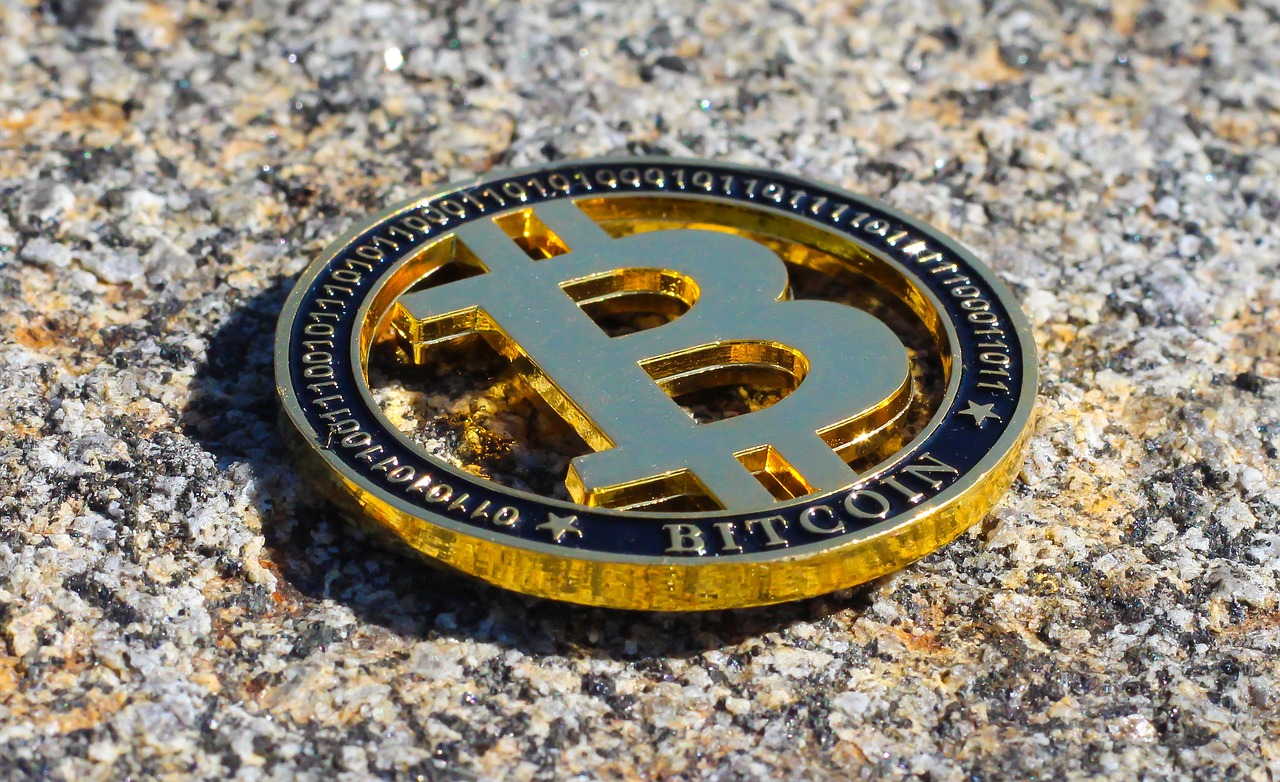
What is a Crypto Fork?
A crypto fork is a fascinating phenomenon in the world of blockchain technology. Imagine a road that suddenly splits into two different paths; that’s essentially what happens during a fork. When a blockchain diverges into two separate paths, it leads to the creation of a new cryptocurrency. This split can occur for various reasons, including the need for upgrades, changes in governance, or community disagreements. Understanding this concept is crucial for anyone looking to navigate the ever-evolving landscape of cryptocurrencies.
To better grasp how forks work, consider this analogy: think of a software application that needs to improve its features or fix bugs. Developers might choose to create an updated version of the application, while still allowing users to access the older version. In the same way, a crypto fork allows the blockchain to evolve while still maintaining a connection to its original version. This flexibility is essential in a rapidly changing digital economy.
There are two primary types of forks: soft forks and hard forks. Each type serves different purposes and has unique implications for the blockchain community. For instance, a soft fork is like a gentle upgrade that allows the blockchain to remain compatible with previous versions, while a hard fork is a more drastic change, akin to creating a brand-new road where the old one no longer exists. Understanding these distinctions is key for investors, developers, and users alike.
In summary, a crypto fork represents a critical moment in the life of a blockchain, marking its evolution and adaptation to new challenges and opportunities. Whether you’re an investor or simply a curious observer, recognizing the significance of these forks will help you make informed decisions in the dynamic world of cryptocurrencies.
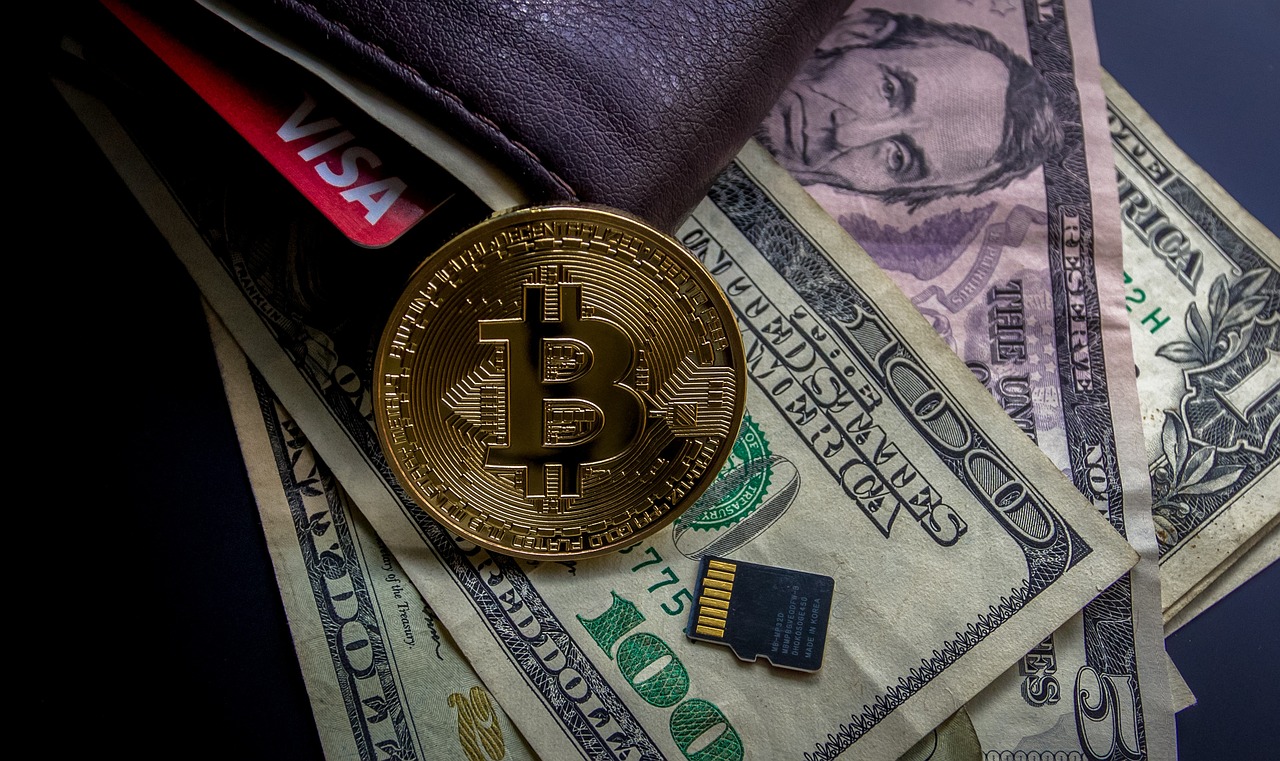
Types of Crypto Forks
When diving into the world of cryptocurrencies, understanding the different types of forks is crucial. Forks are not just technical changes; they can reshape the entire landscape of a blockchain. There are primarily two categories of forks that you’ll encounter: soft forks and hard forks. Each type serves a unique purpose and comes with its own set of implications for developers and investors alike.
Soft forks are essentially backward-compatible upgrades. This means that the new rules introduced by the fork can be recognized by nodes that haven’t upgraded yet. Imagine a highway where some lanes are newly paved and others are not; vehicles can still use the old lanes while benefiting from the smoother ride in the new ones. This flexibility is one of the main advantages of soft forks, allowing users to transition at their own pace without immediately forcing everyone to upgrade.
On the flip side, we have hard forks. These are more like building a new road that diverges from the original one entirely. A hard fork creates a permanent split in the blockchain, resulting in two separate cryptocurrencies. This can happen for various reasons, such as disagreements within the community about the direction of the project. For instance, when Bitcoin Cash was created from Bitcoin, it marked a significant hard fork that led to the emergence of a new cryptocurrency with its own rules and features.
Both types of forks can be essential for the growth and evolution of cryptocurrencies. However, they can also lead to confusion among users, especially if they don’t fully understand what each type entails. To help clarify, here’s a quick overview:
| Type of Fork | Compatibility | Impact on Users |
|---|---|---|
| Soft Fork | Backward-compatible | Users can continue using the old version while benefiting from new features |
| Hard Fork | Not backward-compatible | Results in two separate cryptocurrencies; may require users to choose a side |
In conclusion, understanding the types of forks is essential for anyone involved in the cryptocurrency space. Whether you’re a developer looking to implement changes or an investor trying to navigate the market, knowing the implications of soft and hard forks can significantly impact your strategies and decisions. So the next time you hear about a fork in the crypto world, you’ll be equipped with the knowledge to understand its potential effects.

Soft Forks Explained
A soft fork is a fascinating concept in the world of blockchain technology. Imagine a group of friends deciding to adopt a new game rule while still allowing everyone to play the old version. In the blockchain universe, this analogy holds true. A soft fork occurs when a blockchain undergoes an upgrade that is backward-compatible, meaning that nodes (the computers that make up the network) can still recognize and validate the older blocks even after the upgrade takes place. This flexibility is what sets soft forks apart from their more drastic counterpart, the hard fork.
When a soft fork is implemented, it can introduce new features, enhance security, or improve the overall functionality of the blockchain without forcing all users to immediately upgrade their software. This is crucial in a decentralized ecosystem where not all participants may be ready or willing to adopt changes at the same time. For instance, consider a community that wants to introduce a new way of voting but still allows those who prefer the old method to participate. This duality is what makes soft forks appealing.
One of the most notable examples of a soft fork is the Segregated Witness (SegWit) upgrade in Bitcoin. SegWit aimed to improve transaction capacity and efficiency by separating signature data from transaction data. This allowed more transactions to be included in each block, ultimately benefiting the entire network without alienating users who were not ready to upgrade. The implementation of SegWit was a significant milestone, showcasing how soft forks can bring about positive changes while maintaining network cohesion.
However, it’s important to note that while soft forks can be beneficial, they are not without their challenges. Confusion may arise among users who may not fully understand the implications of the changes. For example, if the new rules are not clearly communicated, some users might inadvertently create blocks that are incompatible with the new version of the blockchain. This could lead to potential security risks, as nodes may become split between the old and new rules, creating uncertainty in the network.
In summary, soft forks represent a delicate balance between innovation and stability in the blockchain space. They allow for gradual improvements without disrupting the entire network, making them a valuable tool for developers and users alike. Understanding soft forks is essential for anyone looking to navigate the complexities of the cryptocurrency landscape.
- What is the main difference between a soft fork and a hard fork? A soft fork is backward-compatible, allowing old nodes to function with new rules, while a hard fork creates a permanent split, resulting in two separate blockchains.
- Can soft forks lead to security issues? Yes, if not properly managed, soft forks can cause confusion and potential security vulnerabilities during the transition period.
- How does a soft fork affect cryptocurrency holders? Typically, holders are not required to take any action, but they should be aware of the changes to understand how it may impact their assets.

Benefits of Soft Forks
Soft forks bring a plethora of benefits to the cryptocurrency ecosystem, making them a favored choice for developers looking to enhance their blockchain without causing major disruptions. One of the most significant advantages is their backward compatibility. This means that even if some nodes do not upgrade to the new version, they can still interact with the rest of the network. This seamless integration helps in maintaining the overall stability of the blockchain, allowing users to continue their activities without interruption.
Another notable benefit of soft forks is their ability to introduce new features and improvements without requiring all users to adopt the changes immediately. This gradual approach can lead to a smoother transition, reducing the chances of user confusion that often accompanies more drastic changes. For instance, a soft fork might enhance security protocols or add new functionalities, like improved transaction speeds, all while keeping the core of the blockchain intact.
Additionally, soft forks can significantly improve the security of a blockchain network. By allowing developers to implement updates that fix vulnerabilities, soft forks can help protect users' assets. This is particularly crucial in a landscape where security breaches can lead to devastating financial losses. When a soft fork is executed correctly, it can fortify the blockchain against potential threats, ensuring that users can transact with confidence.
Cost-effectiveness is another compelling reason to favor soft forks. Unlike hard forks, which often require extensive resources and time to develop and implement, soft forks can be executed with less disruption and lower costs. This efficiency can be particularly appealing to smaller projects or startups that may not have the extensive resources of larger players in the crypto space.
In conclusion, while soft forks may not always grab the headlines like their hard fork counterparts, their benefits are substantial. They foster a collaborative environment where innovation can thrive without alienating users. This ability to enhance the blockchain ecosystem while keeping the community intact is what makes soft forks a vital tool in the ever-evolving world of cryptocurrency.
- What is a soft fork? A soft fork is a backward-compatible upgrade to a blockchain that allows nodes to recognize new blocks while still accepting older blocks.
- How does a soft fork differ from a hard fork? A hard fork creates a permanent divergence in the blockchain, resulting in two separate cryptocurrencies, while a soft fork maintains compatibility with the original blockchain.
- What are the security implications of a soft fork? Soft forks can enhance security by fixing vulnerabilities, but they can also introduce risks if not implemented carefully.
- Can users choose not to upgrade during a soft fork? Yes, users can opt not to upgrade, as soft forks are designed to be backward compatible.
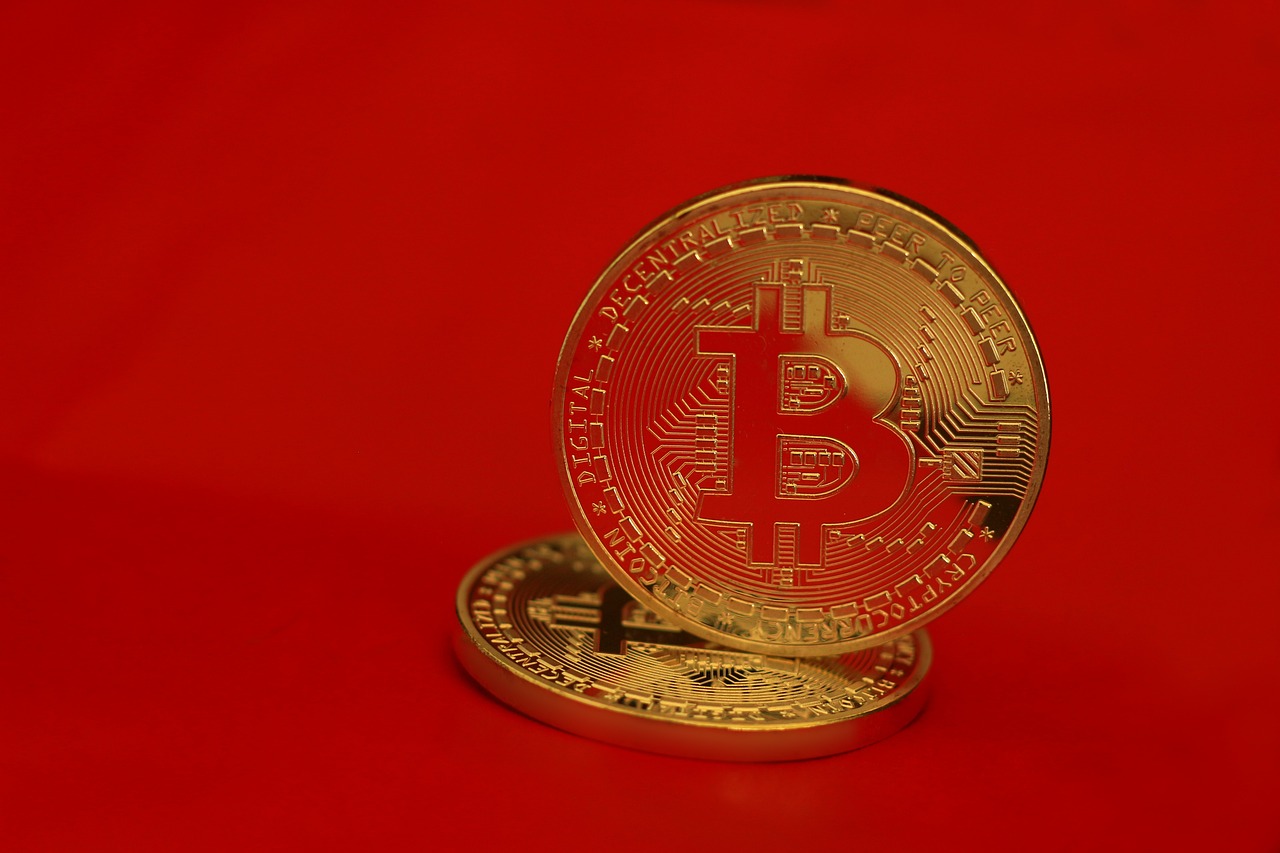
Challenges of Soft Forks
While soft forks can be beneficial for a blockchain ecosystem, they are not without their challenges. One of the primary issues that arise during the implementation of a soft fork is user confusion. Since soft forks are backward-compatible, users may not be aware of the changes that have occurred, leading to a lack of understanding about the new features or security enhancements. Imagine upgrading your smartphone without realizing that the interface has changed; you might find yourself lost and frustrated, which is similar to how users feel when they are not adequately informed about a soft fork.
Moreover, the decentralized nature of blockchain means that not all nodes may upgrade to the new version simultaneously. This can lead to a situation where some users are operating on the old version while others are using the new one, creating a fragmented network. During this transitional phase, the potential for security vulnerabilities increases. For instance, if a significant number of users stick to the older version, they might be exposed to risks that the new version has addressed, making them easy targets for malicious actors.
Another challenge is the risk of chain splits. Although soft forks are designed to prevent this, if a substantial portion of the community does not adopt the new rules, it can result in a situation where two versions of the blockchain coexist, similar to a divided highway where drivers are unsure which lane to take. This division can create uncertainty in the market, causing price fluctuations and affecting investor confidence.
Additionally, the governance aspect of soft forks can be contentious. Decisions on whether to implement a soft fork often involve heated discussions within the community, as different stakeholders may have varying opinions on the changes. This can lead to conflicts among developers, miners, and users, potentially resulting in a lack of consensus and further complicating the implementation process.
To summarize, the challenges of soft forks include:
- User confusion due to lack of awareness about changes.
- Increased security vulnerabilities during the transition period.
- The risk of chain splits leading to fragmented networks.
- Contentious governance discussions that may hinder consensus.
Addressing these challenges requires effective communication and education within the community to ensure that all participants understand the implications of the soft fork and can adapt accordingly. By fostering a collaborative environment, the potential risks associated with soft forks can be mitigated, paving the way for smoother transitions and enhanced blockchain functionality.
- What is a soft fork in cryptocurrency? A soft fork is a backward-compatible upgrade that allows nodes to recognize new blocks while still accepting older blocks.
- How does a soft fork differ from a hard fork? A hard fork creates a permanent divergence from the original blockchain, resulting in two separate cryptocurrencies, while a soft fork maintains compatibility with the original chain.
- What are the risks associated with soft forks? Risks include user confusion, security vulnerabilities, potential chain splits, and contentious governance discussions.
- How can the challenges of soft forks be addressed? Effective communication and education within the community can help mitigate risks and ensure a smoother transition.
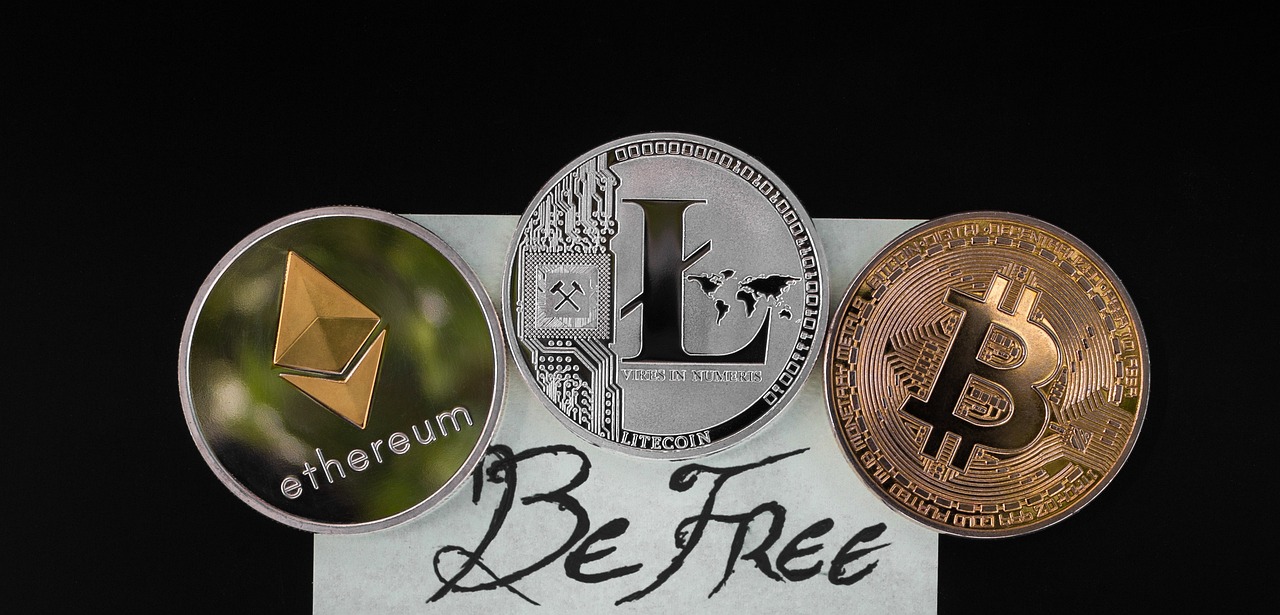
Hard Forks Explained
A hard fork represents a significant change in a blockchain protocol that results in a permanent divergence from the original chain. Think of it as a fork in the road where one path continues down the original trail, while the other ventures into new territory. This divergence leads to the creation of a new cryptocurrency that operates on its own set of rules, completely separate from the original blockchain. Hard forks can arise from various motivations, including the need for innovation, addressing security vulnerabilities, or disagreements within the community about the future direction of the project.
When a hard fork occurs, it is essential to understand that all transactions and blocks from the original blockchain are preserved, but the new chain will have its unique features. To illustrate this, consider the Bitcoin Cash hard fork from Bitcoin in 2017. Bitcoin Cash was created as a response to scalability issues, aiming to allow for larger block sizes and faster transaction times. This situation showcases how hard forks can arise from differing philosophies within the cryptocurrency community.
One of the most critical aspects of a hard fork is the community consensus. For a hard fork to be successful, a significant portion of the community must agree to adopt the new version of the blockchain. If the community is divided, it can lead to confusion and fragmentation, resulting in multiple versions of the cryptocurrency coexisting. This fragmentation can create opportunities for arbitrage but can also dilute the value of the original asset.
To better understand the mechanics of hard forks, let's look at the following table that outlines the key characteristics and implications:
| Characteristic | Implication |
|---|---|
| Permanent Divergence | Creates a new cryptocurrency with its own blockchain. |
| Community Consensus | Requires significant support from users and developers. |
| Potential for Value Creation | Investors may receive new coins, leading to increased interest. |
| Market Impact | Can lead to price volatility for both the original and new coins. |
In conclusion, understanding hard forks is crucial for any investor or enthusiast in the cryptocurrency space. They can provide opportunities for innovation and investment but also come with their unique challenges. As the crypto landscape continues to evolve, being aware of these changes will empower you to make informed decisions and navigate this exciting yet volatile market.
- What happens to my coins during a hard fork? If you hold coins on the original blockchain, you may receive an equivalent amount of the new cryptocurrency, depending on the fork's specifics.
- Are hard forks always successful? Not necessarily. A hard fork requires community support, and if the community is divided, it may lead to confusion and a lack of adoption.
- Can I lose money during a hard fork? Yes, hard forks can lead to market volatility, and the value of both the original and new cryptocurrencies can fluctuate significantly.

Risks Associated with Crypto Forks
When it comes to the world of cryptocurrencies, forks can be a double-edged sword. While they can create new opportunities, they also come with a set of risks that every investor should be aware of. Understanding these risks is essential for making informed decisions in a market that is already known for its volatility. So, what are these risks? Let’s delve deeper into the potential pitfalls associated with crypto forks.
One of the most significant risks tied to forks is market volatility. When a fork occurs, it often leads to a whirlwind of trading activity as investors react to the news. Prices can swing dramatically within a short period, creating a rollercoaster ride for those involved. For instance, after a major fork announcement, you might see the price of the original cryptocurrency surge, while the newly created one might experience erratic fluctuations as traders speculate on its future value. This kind of volatility can result in substantial gains, but it can just as easily lead to significant losses.
Moreover, during a fork, there is also the risk of security vulnerabilities. This is particularly true during the transition period when both the original and the new blockchain exist simultaneously. Attackers may exploit this uncertainty, potentially leading to double-spending attacks or other forms of fraud. For example, if a malicious actor manages to exploit the network during this tumultuous time, they could undermine the integrity of both cryptocurrencies. Therefore, it’s crucial for investors to be vigilant and ensure that they follow best practices for security during these events.
Additionally, forks can create a sense of confusion within the community. This confusion can stem from unclear communication about the fork's implications, leading to misinformed decisions among investors. Some may not fully understand how to claim their new tokens, or they might be unsure about which version of the blockchain to support. This lack of clarity can result in missed opportunities or, worse, financial losses. To help mitigate this risk, it's advisable to stay informed through reliable sources and engage with community discussions.
In summary, while crypto forks can open doors to new investments and innovations, they are not without their risks. The potential for market volatility, security vulnerabilities, and community confusion are significant factors that every investor must consider. By understanding these risks, you can better navigate the complex landscape of cryptocurrency and make more informed decisions.
- What is a crypto fork? A crypto fork occurs when a blockchain diverges into two separate paths, leading to the creation of a new cryptocurrency.
- What are the two main types of forks? The two main types of forks are soft forks and hard forks, each with distinct characteristics.
- How can I protect my investments during a fork? Stay informed, follow best security practices, and be cautious about trading during high-volatility periods.
- Can forks affect the price of cryptocurrencies? Yes, forks often lead to significant price fluctuations, impacting investor sentiment and market stability.

Market Volatility
When it comes to the world of cryptocurrencies, is a term that gets thrown around quite a bit, especially during events like forks. But what does it really mean for investors? Imagine you're on a roller coaster, and just when you think you're at the top, the ride takes a sudden drop. That's the kind of unpredictability we often see in the crypto market surrounding forks. These events can lead to significant price fluctuations, which can be both exhilarating and terrifying for investors.
Forks, whether soft or hard, can trigger a whirlwind of reactions in the market. When a fork is announced, traders often rush to buy or sell their holdings, leading to a spike in trading volume. This surge can create a domino effect, where one trader's actions influence another's, resulting in rapid price changes. For instance, if a hard fork is set to create a new cryptocurrency, investors might scramble to acquire the original asset in hopes of benefiting from the new coin's potential value. This rush can cause the original cryptocurrency's price to soar, only to plummet once the initial excitement dies down.
Additionally, the uncertainty surrounding the implications of a fork can cause anxiety among investors. Will the new coin hold its value? What if the original chain becomes less popular? These questions can lead to panic selling, further exacerbating market volatility. In fact, studies have shown that prices of cryptocurrencies can swing by double-digit percentages within hours of a fork announcement.
To illustrate this point, let's take a look at a historical example. During the Bitcoin Cash hard fork in 2017, Bitcoin’s price experienced a wild ride:
| Date | Bitcoin Price (USD) | Bitcoin Cash Price (USD) |
|---|---|---|
| August 1, 2017 | $2,800 | $0 (newly created) |
| August 2, 2017 | $2,500 | $400 |
| August 3, 2017 | $2,700 | $300 |
As seen in the table, Bitcoin's price dropped significantly right after the fork, while Bitcoin Cash quickly gained traction, showcasing the immediate impact of market sentiment and trading behavior post-fork. This example highlights how forks can create a ripple effect in the market, leading to both opportunities and risks for investors.
In conclusion, while forks can present opportunities for profit, they also come with a hefty dose of risk due to the volatile nature of the cryptocurrency market. Investors must stay informed, remain vigilant, and be prepared for the unexpected. Just like a roller coaster ride, the key is to hold on tight and enjoy the thrill, but always be ready for that next big drop!
- What is a crypto fork? A crypto fork occurs when a blockchain diverges into two separate paths, leading to the creation of a new cryptocurrency.
- What are the types of crypto forks? The two main types are soft forks and hard forks, each with different implications for users.
- How do forks affect cryptocurrency prices? Forks can lead to significant price fluctuations due to market speculation and investor sentiment.
- Are there risks associated with crypto forks? Yes, risks include market volatility and potential security vulnerabilities during the transition period.
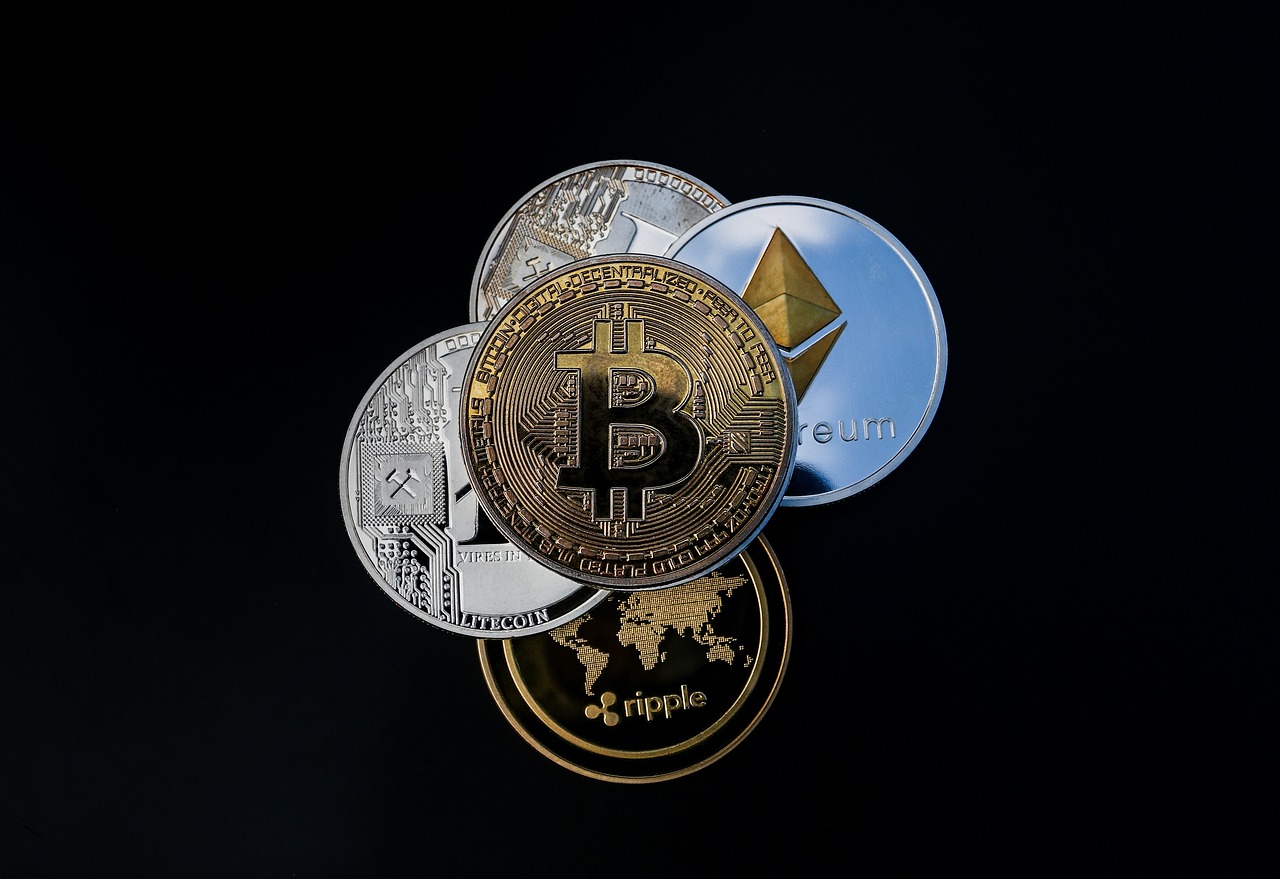
Security Concerns
When it comes to crypto forks, security is a paramount concern that cannot be overlooked. Both soft and hard forks introduce unique challenges that can expose the network and its users to various vulnerabilities. During the transition period of a fork, the blockchain may experience instability, leading to potential exploits. For instance, malicious actors might take advantage of the confusion surrounding the fork to execute attacks, such as double spending or phishing scams. This uncertainty can create a breeding ground for fraud, making it crucial for investors and users to remain vigilant.
Moreover, the process of forking itself can lead to security risks. In a hard fork, when a new blockchain is created, it can fragment the community, resulting in a split in support and resources. This division can weaken the overall security of both the original and the new blockchain, as fewer nodes may be available to validate transactions. In such cases, the network effect—the value of a network increasing as more people use it—can be compromised, leading to increased susceptibility to attacks.
To illustrate the potential risks, let’s consider a hypothetical scenario where a hard fork occurs without adequate communication or planning. If a significant portion of the community chooses to support the new chain, the original chain may struggle to maintain its security due to a lack of active nodes. This situation could leave the original blockchain vulnerable to 51% attacks, where a single entity gains control of the majority of the network's mining power, allowing them to manipulate transactions at will.
Additionally, soft forks, while generally seen as less disruptive, are not without their own security concerns. Since soft forks are backward-compatible, there’s a chance that older nodes may not recognize new blocks, leading to potential forks within the fork—creating a scenario where two versions of the blockchain coexist. This can confuse users and result in inconsistencies in transaction validation. In such cases, users might inadvertently send funds to an address that exists on one version of the blockchain but not on the other, leading to irreversible losses.
To mitigate these risks, it is essential for users to stay informed and follow best practices when dealing with forks. Here are some recommendations:
- Stay Updated: Follow reliable news sources and community discussions to keep abreast of any upcoming forks.
- Use Reputable Wallets: Ensure that your wallet supports the fork and is known for its security measures.
- Verify Transactions: Double-check transaction details before sending funds, especially during a fork.
- Be Cautious with New Coins: If a new cryptocurrency is created as a result of a fork, research its legitimacy before investing.
In conclusion, while forks can be a thrilling part of the cryptocurrency landscape, they come with inherent security risks that should not be taken lightly. By understanding these challenges and taking proactive measures, users can better navigate the complexities of crypto forks and protect their investments.
Q1: What is the difference between a soft fork and a hard fork?
A soft fork is a backward-compatible upgrade that allows older nodes to continue functioning with the new version, while a hard fork creates a permanent split, resulting in two separate blockchains.
Q2: Can I lose my funds during a crypto fork?
Yes, if you are not careful, you could lose funds during a fork, especially if you send them to an address that is not recognized on the new blockchain.
Q3: How can I protect myself during a fork?
Stay informed, use reputable wallets, verify transactions, and be cautious with new coins that may arise from the fork.
Frequently Asked Questions
- What is a crypto fork?
A crypto fork occurs when a blockchain splits into two separate paths, resulting in the creation of a new cryptocurrency. This can happen due to changes in protocol, community disagreements, or upgrades to the existing blockchain.
- What are the types of crypto forks?
There are two main types of forks: soft forks and hard forks. Soft forks are backward-compatible changes that allow older versions of the software to still participate in the network, while hard forks create a permanent split, resulting in two distinct cryptocurrencies.
- What are the benefits of soft forks?
Soft forks can enhance security and introduce new features without requiring all users to upgrade their software. This flexibility helps maintain network stability while allowing for improvements.
- What challenges do soft forks present?
Despite their advantages, soft forks can create confusion among users and lead to potential security risks if not properly implemented. Users may struggle to adapt to the changes, which can result in fragmentation of the network.
- What happens during a hard fork?
A hard fork results in a permanent divergence from the original blockchain, creating two separate cryptocurrencies. This can occur when there is a disagreement within the community about the direction of the project.
- What risks are associated with crypto forks?
While forks can present new opportunities, they also come with risks such as market volatility and potential loss of funds. Investors need to be aware of these risks to make informed decisions.
- How do forks affect market volatility?
Forks can lead to significant price fluctuations as traders react to the news. This volatility can affect investor sentiment and overall market stability, making it crucial for investors to stay informed.
- Are there security concerns with forks?
Yes, forks can introduce security vulnerabilities, especially during the transition period. It's essential for users to be cautious and implement security measures to protect their investments during these times.













